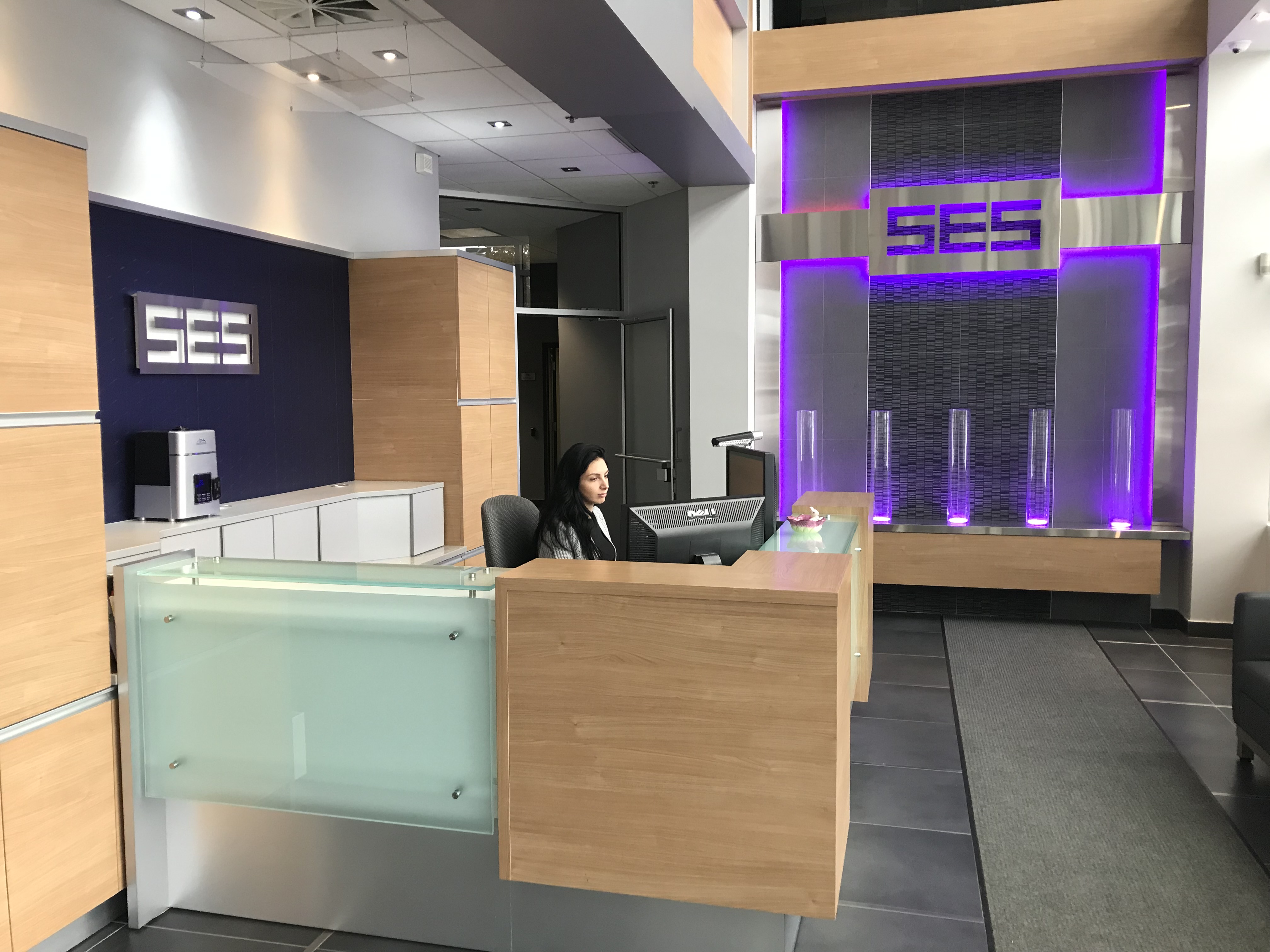Certification Training Courses
Certifications and Associated Training Programs (Download PDF )
The Certified Training Courses are tailored by SES based on an appropriate combination of one or several real case studies, fundamental concepts and essential analytical skills and knowledge that are required to achieve a specific competence level. The real case studies can be based on an ongoing or future candidate project that has been modified and expanded by SES (if necessary) to meet the required criteria for the certification level that is the target for the course. The advantage of using the candidate’s own project is obvious, in terms of the dual purpose training and work productivity during the course.
Reception Area
SES certifications constitute an effective manner for engineering professionals to validate skills and demonstrate knowledge and proficiency in a highly competitive market. SES certifications also provide a means of common and consistent reference for evaluating that knowledge. The mission of SES’s Grounding & EMI Training Academy is to:
SES presently offers three levels of certification training programs that lead to a certificate granted by SES following successful completion by the candidate of a formal exam during the training period (i.e., onsite). The names of the successful candidates are published on SES’s website to confirm the validity and authenticity of the certificate. The validity of the certification period varies from 5 years to 10 years depending on the certification level as explained below.
Each curriculum consists of a progressive set of classes with three qualification levels: Fundamental, Advanced, and Expert. Each level concludes with an exam to ensure that the training was successful.
SES Certification Levels
Level 1
Fundamental
Level 2
Advanced
Level 3
Expert
Candidates progress from a conceptual understanding and an ability to evaluate the work performed by others, at the Fundamental certification level, to being able to carry out analysis and design studies using the CDEGS software package, in one of two areas of specialty, at the Advanced level. At the Expert level, the candidate is able to analyze all complex aspects of grounding, lightning and EMI issues, with the successful design of economical mitigation measures, where needed, based on sound concepts and judgment.
The Fundamental Certification training is designed for participants with little or no familiarity with grounding, lightning and EMI issues. Level 1 certification means that the individual understands the key concepts related to grounding, lightning and EMI studies and is therefore in a position to evaluate the validity of such studies as a manager, supervisor or client.
Prerequisites: Period of Validity:Ten years. After this period, the candidate must attend a refresher course and pass the associated exam.
Information about Level 1 Certification compressed courses: please click here.
Course Description
Candidates that have elected to acquire Level 1 Certification must complete and pass an exam at the training session.
Upon completion of the Level 1 course, candidates will be able to:
The Level 2 training is designed for Level 1 graduates who wish to learn to perform studies themselves and carry out design work in one of two areas of specialization: substation grounding (including lightning shielding) and power line electromagnetic interference. Level 2 graduates are recognized by SES as having the ability to carry out such studies using the CDEGS software package, without supervision, and to evaluate the work of others.
Prerequisites: Period of Validity:Six years. After this period, the certified candidate must attend an updated course and pass the associated exam.
Course Description:There are two Advanced Certification (Level 2) specializations:
Regardless of the specialization chosen for Certification Level 2, the next certification level (i.e., Level 3: Expert) focuses on topics that are not covered in the Level 2 specialization chosen by the candidate. The Expert Level certification therefore attests to expertise in both subject areas.
Candidates must complete and pass an exam at the training session to verify their mastery of the material taught at the course and submit proof of the required industry experience (this can include attendance at SES Users Group Conferences, technical reports, publications, etc.).
1. Upon completion of the Advanced Certification course specializing in Grounding Performance of High Voltage Substations, candidates will be able to:
2. Upon completion of the Advanced Certification course specializing in Interference from High Voltage Lines (EMI), candidates will be able to:
The Expert Certification training provides Level 2 graduates with the complementary Level 2 specialization (i.e., substation grounding or power line EMI), the ability to carry out transient studies involving power system effects on low voltage circuits and design corrective measures, and generally, mastery of the use of the CDEGS software package to solve complex engineering problems. Level 3 graduates are recognized by SES as expert consultants in the areas of power system grounding, EMI, lightning and other transients and as power users of the CDEGS software package.
Prerequisites: Period of Validity:Five years. After this period, the candidate must attend an updated course and pass the associated exam.
Course Description:This course consists of the complement to the Level 2 specialization previously chosen by the candidate, as described in the Level 2 curriculum above, as well as the following subjects:
Upon successful completion of the Expert Certification course, candidates will therefore have a well-rounded education and expertise in the areas of high voltage substation grounding, AC interference from high voltage lines and large magnitude transient interference with low voltage circuits. The participant will be able to perform complex technical tasks independently and advise others on the performance of these tasks, as well as be able to evaluate, synthesize and communicate abstract concepts and make judgments about information and the validity of ideas.
Candidates for the Expert certification level must complete and pass an exam at the training session to verify their mastery of the material taught at the course. They must also be able to demonstrate their experience and proficiency in their Level 2 area of specialization (e.g., attendance at SES Users Group Conferences, technical reports, publications, etc.).



